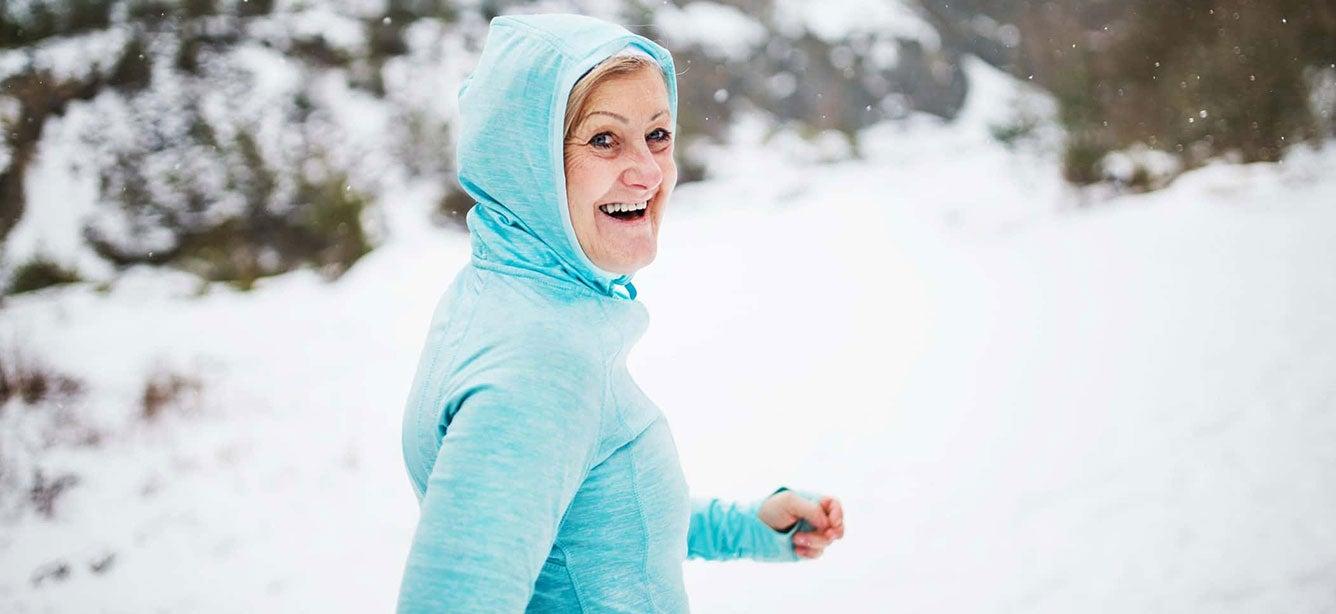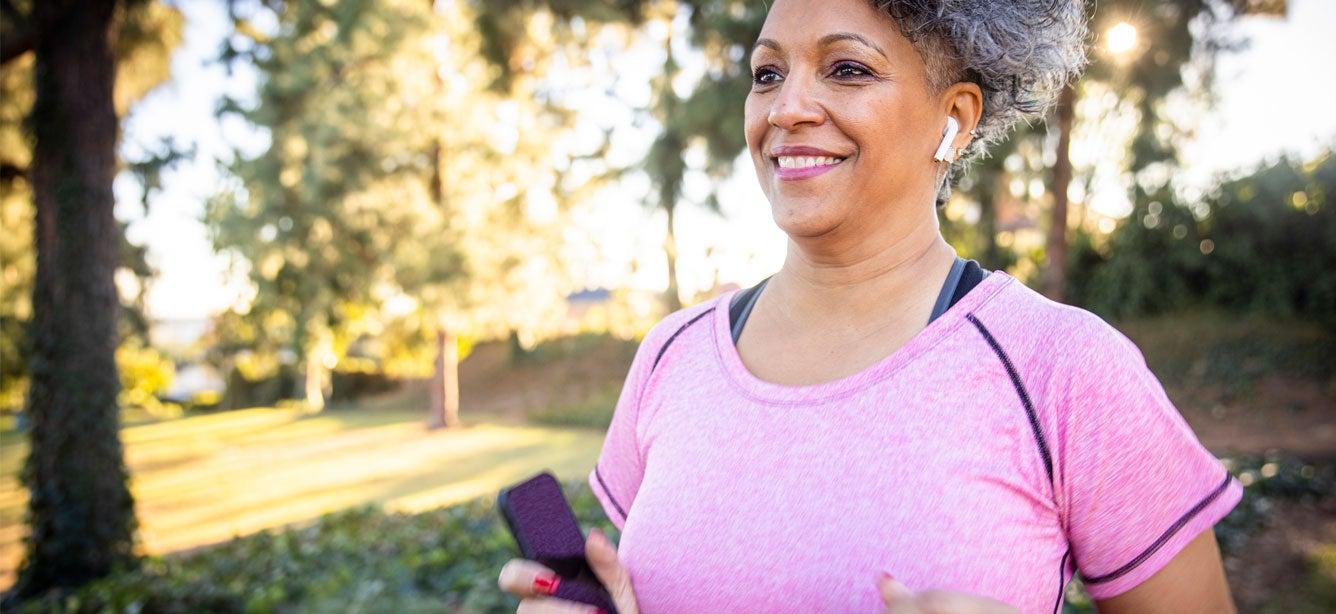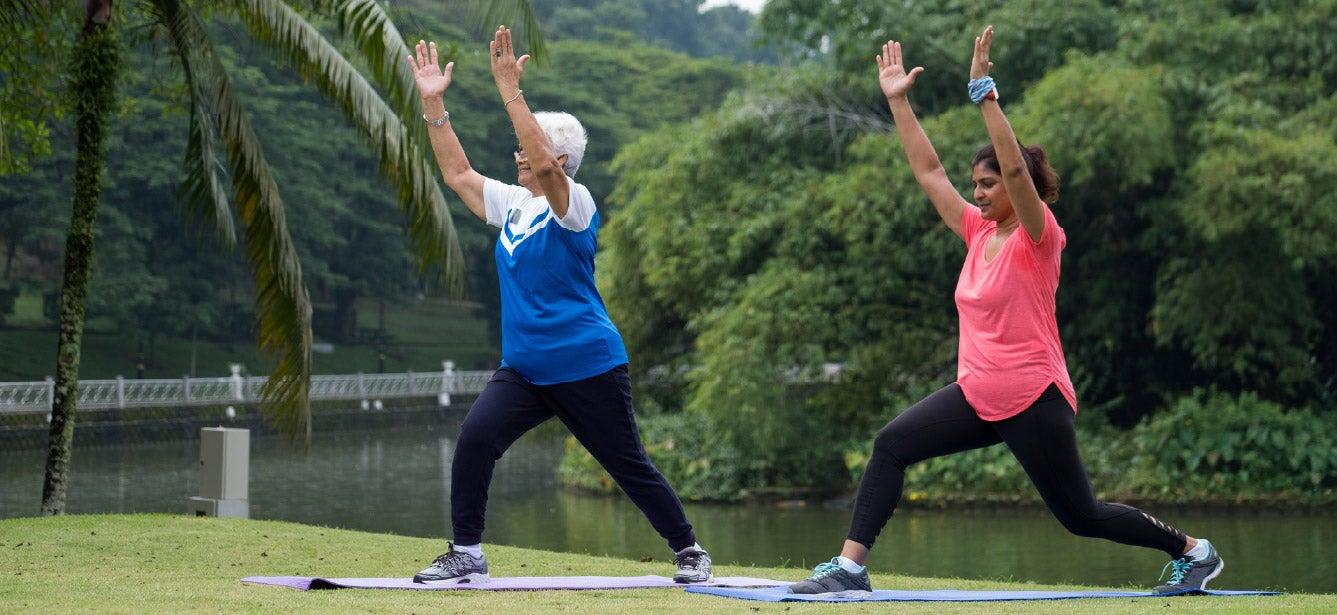
Related Topics
No matter your age, staying active is key to aging well—and there's scientific evidence to prove it. When adults exercise regularly, benefts include improved cardiovascular and muscle ftness, improved brain health, and better ability to do tasks of daily life.
According to U.S. Department of Health and Human Services' (HHS) recent Physical Activity Guidelines for Americans (2019):
- Half of all American adults—117 million people—have one or more preventable chronic diseases.
- Seven of the 10 of the most common chronic diseases are favorably influenced by regular physical activity.
- However, adults are not meeting the key guidelines for both aerobic and muscle-strengthening activity (nearly 80%), and only about half meet the key guidelines for aerobic physical activity.
- Lack of physical activity is linked to approximately $117 billion in annual health care costs and about 10% of premature mortality.
How do we stay fit, and ultimately healthy, as we age? The HHS guidelines recommend that adults move more and sit less throughout the day by engaging in a combination of aerobic activities, as well as balance training and muscle strengthening.
HHS also recommends that adults with chronic conditions or disabilities should exercise with moderate-intensity for at least 2 hours and 30 minutes a week, or for 1 hour and 15 minutes with vigorouse intensity. HHS doesn't recommend you do it all in one sitting. In fact, your aerobic activity should be spread throughout the week. For additional health benefits, HHS recommends strength and balance activities of moderate or greater intensity, involving all major muscle groups on two or more days a week.
But exercising during the winter months can be challenging, especially as temperatures drop, roads and sidewalks are slippery, and storms prevent outdoor activities. To help you stay engaged (and motivated), here are six ways to keep active.
1. Explore arthritis-friendly exercise videos
Check out these Mayo clinic minute videos on Tai Chi for older adults and 'Fab 5' exercises to get you moving. Dartmouth Health offers these Seated Exercises for Older Adults that help with strength and balance.
2. Find an exercise class near you
It can be hard to stay motivated while exercising alone. Find an evidence-based exercise class such as EnhanceFitness or A Matter of Balance that can offer different options for activities and provide an opportunity to meet up with friends.
3. Go mall walking
This Mall Walking Resource Guide provides ideas for walking solo or with a group at a local mall. Moving your regular walks inside for the winter provides a warm, safe, and well-lit environment to keep active.
4. Take steps to prevent falls
If you do walk outside, take precautions to avoid slips and trips on icy sidewalks. Check out how you can Winterize to Prevent Falls.
5. Get a workout to go
The Workout to Go guide from the National Institute on Aging has several options for exercising in your own home, including hand grips, wall pushups, and arm raises.
6. Find an indoor community pool or track
Many local Parks and Recreation Centers and YMCAs offer physical activity options, such as swimming, walking on indoor tracks, and group exercise for older adults.
No matter what exercise you choose to do to stay active this winter, it's advised that you consult a health care professional or physical activity specialist about the types and amounts of activity appropriate for your abilities and chronic conditions. And if you have chronic conditions, like osteoarthritis, diabetes, hypertension, cancer, or other types of physical disabilities, HHS has additional recommendations within its Guidelines (see pages 82-84) for you.



